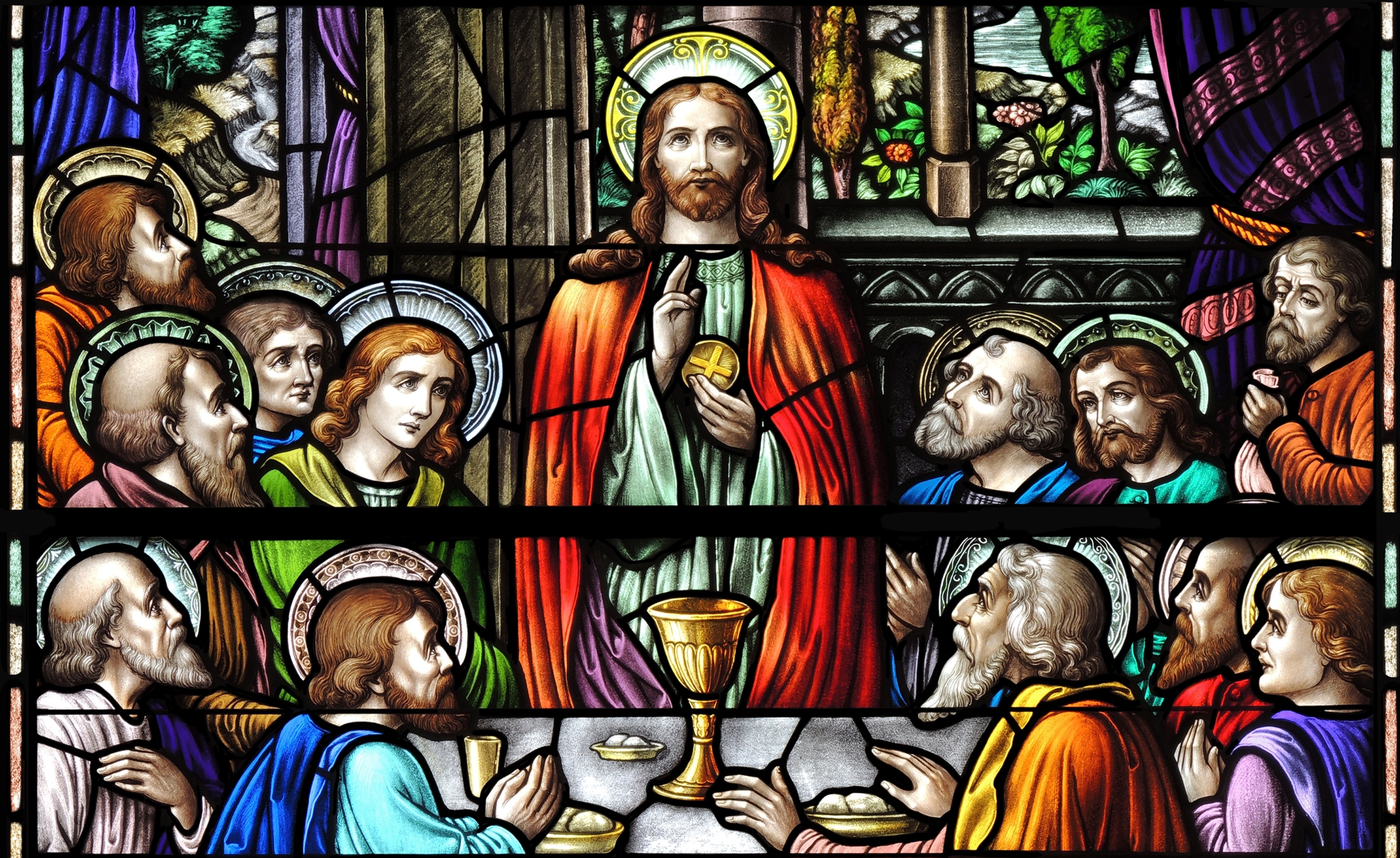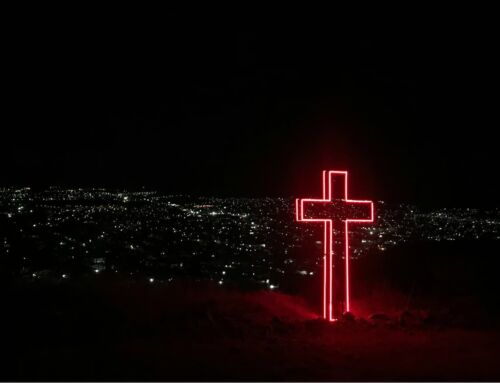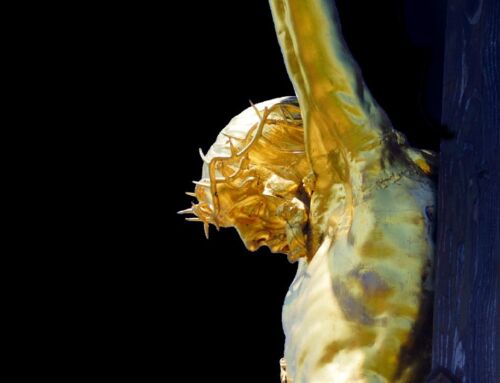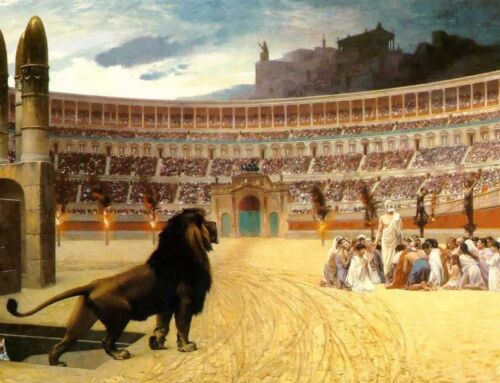[This article follows from the email newsletter of June 13, 2021, “An Astonishing Eucharistic Scene in a Secular Movie”.]
The 1984 movie, Places in the Heart is one of the most moving tales of the triumph of the human spirit over adversity in modern film. Sally Field fittingly won the Academy Award for Best Actress for her role in the film.
What follows is a brief description of the plot accompanied by a four-minute clip of the final scene. Hopefully the plot description will help you appreciate the nuances of the powerful scene.
Human Tragedy and the Life of Grace
The movie is set in Waxahachie, Texas, at the height of the Great Depression (1935). Sally Field plays Edna Spalding, a mother of two small children in a rural community, and her husband (played by Ray Baker) is the sheriff of the small town.
Utter calamity strikes when a young black man, Wylie (De’voreaux White), was out on the railroad tracks, drunk and playing with a gun he thought was unloaded. He inadvertently kills the sheriff with a random shot, and the brutality of the pre-civil rights era of the Deep South comes to light in a brief but horrifying lynching scene that follows.
The tragedy of these two killings will be one of the details to reappear – and be reconciled – in the Eucharistic scene at the end.
What follows from that double tragedy is a tale of human desperation foisted on a family of innocents. It is a sort of John Steinbeck-like tale of hardship that people who have experienced sudden, catastrophic loss know all too well.
When her husband is killed, Edna’s life is totally shattered, and she is left without resources or comfort. Even her little family home and farm are on the chopping block for foreclosure by the town’s bank president, who is mildly sympathetic to her desperate plight but seems unable to appease the god of Mammon he serves. He insists the loan must be paid or she will lose the house and the entire farm.
A Fractured Community
The narrative also depicts a local community that is almost as broken as Edna. Like the bank president, they are all sympathetic but are extremely limited in their ability to support the suffering family. The picture of the townsfolk is one of fractured, disconnected units, each suffering in their own way the poverties of the Depression era.
As Edna tries to pull her family away from the brink of disaster, certain imperfect and morally-compromised characters enter her life and add further complexity to the human drama. One misfortune follows another: the bank president foists his insensitive blind cousin Will (John Malkovich) on Edna as a boarder, and a black grifter named Moze (Danny Glover) arrives at her door looking for a meal and ends up stealing her silverware.
Other calamities increase the small family’s desperation and give the sense that nothing is working. In fact, everything in Edna’s life is declining in the direction of homelessness and disaster.
Turning Tides and Saving Graces
The tide turns, although imperceptibly, through a number of dramatic encounters as Edna’s struggle continues. It is the tale of a motley crew of misfits thrown together in one place, all depending on each other for survival and all making sacrifices for each other that bind them together in their common humanity and suffering.
The bereaved mother and her helpless children, the blind guy with an attitude, and the petty criminal form a coalition of the unwilling who end up pulling off an impossible human victory against the hostile forces of both nature and humanity.
First, when Moze is caught with the silverware, Edna declines to prosecute him for the theft and instead puts him to work planting her fields so that she can bring in the community’s first bale of cotton that year. The cash prize for the first bale will save house and family. Moze turns out to be a resourceful man who calls on his network of cotton pickers to join in the effort. As they take to the field, the action intensifies in a race against time and elements to win the contest.
Then, a tornado suddenly comes upon the vulnerable community and catches the two children out of the home and in the path of the killer cyclone. Moze goes out in search of the boy to bring him home, and Will, the blind man, heroically rushes out into the wind-torn landscape groping around to rescue the little girl who got caught outside in the violent storm. Both men risk their lives to save the children.
Incredibly Powerful Scene
Finally, there is an incredibly powerful scene in the midst of their efforts to harvest the first bale of cotton. Apparently Moze has been too effective in helping Edna Spalding and pays a price for it. First, he advised her against a purchase by a local shyster and then organized the effort to beat all the competition and bring in the first bale. He was “uppity” in ways that offended the locals. So the KKK shows up to the farm one night to do to Moze what they did to young Wiley. The white hoods and hangman’s noose are signs that they mean business.
Startlingly, when Will hears the commotion out in the yard, he emerges from the house with a gun to defend Moze. He shoots wildly at men he cannot see, but he misses every target, and Moze wants him to go inside to keep out of harm’s way. Yet, the blind man resolutely defends his newfound friend on the brink of a certain and horrible death.
The mood changes entirely when Will identifies each hooded man by name as he recognizes their voices from long association with the townsfolk. The men slink away in shame that their identities have been exposed to the light by a man who sees no light, and the motley crew lives to fight another day.
A Sub Plot that Begs For Resolution
A scandalous marital affair mars the internal life of Edna’ family. Her sister Margaret (Lindsay Crouse) is married to a philandering husband, Wayne (Ed Harris). When Margaret finds out about her husband’s adultery, she feels betrayed and emotionally shattered and swears she will never forgive him.
At the same time, Wayne’s two-timing adulteress begs him to run off with her, which would completely fracture both of their marriages and families, as well as scandalize their small-town Christian community.
Wayne somehow calls on the deep-seated moral courage to do the right thing and decides to accept the consequences of his actions, which means living in the desolation of an unhappy and unforgiving marriage.
At the end of the movie, this sub-plot will also find resolution and a surprising twist.
The Eucharistic Theme
I mentioned in the newsletter that the movie ends with a powerful Eucharistic scene. Even if you have not seen the movie, the ending is extremely powerful and filled with enormous wisdom. Here are the key elements to look for in the four-minute clip of the scene in the video below:
- The adulterous woman is shown driving past the church (which has an open door) leaving town with the husband she cheated on. She excludes herself from the community of believers even though the “open door” to reconciliation is free and clear. Her lack of repentance and forgiveness are what exclude her, not her sin.
- Inside the little country church, the minister reads the first eight verses of St. Paul’s First Letter to the Corinthians, Chapter 13 (the Love Chapter), and several touching scenes follow. You can watch the clip first or read my interpretation below, but this is one of the most moving scenes in the history of film:
Performance (duration, 4:11)
Reconciliation 1 – Margaret and Wayne
As members of the congregation take their seats, the minister begins to read the verses. During the reading, the offended wife, Margaret, next to the repentant Wayne in the first row, gently reaches out to grasp his hand as the minister reads the words, “Love is patient, love is kind; love is not jealous or boastful…”. Wayne is clearly overwhelmed and humbled by this unwarranted gesture of forgiveness.
The Communion Service
The minister goes on to read the Last Supper Eucharistic narrative from one of the gospels, “On the night he was betrayed….” With the hymn, “In the Garden”, as background, the community begins to pass around the communion plate (bread cubes) and the wine tray (tiny cups of wine). Although it is a Protestant communion service, the point the movie is making is not one of theological precision but rather a depiction of the dramatic spiritual effects of communion in the Body and Blood of Christ.
The camera focuses in closely on one or two persons at a time as they pass the communion plate and wine tray down the line through several pews. Each congregant takes a small cup and wishes God’s peace to the next in line as the congregation continues to sing “In the Garden”.
Second Row: The Banker
Among the various churchgoers, we see the bank president, who despite his earlier hardline approach on the foreclosure issue, eventually treats Edna with compassion. He is flawed but not excluded from communion with God or with the members of the community.
Third Row: The Reconciled Community
A row of random churchgoers, some of whom appeared in various roles throughout the movie. Each person softly wishes God’s peace to the next as the wine tray passes to the fourth and final row, where the profound message of the power of Christ’s love to conquer all things resonates perfectly.
Fourth Row: The Family
Surprisingly, Moze is the first person in this row. His very presence in an all-white church, of course, shatters the powerful segregationist mentality of the day. He had not been seen in the church prior to this, but he appears at communion time. His sacrifice for the family and community merits him a place at the communion table with them.
Blind Will comes next. He who was so hostile to the family at the beginning has become a member of the family. He sits next to the children whose lives he and Moze helped save.
The children then pass the tray on to their mother who says, “Peace of God” and then passes it on as the camera follows the communion line to the very end of the pew.
Reconciliation 2 – Last Two Members of the Congregation
To whom does Edna pass the tray of communion wine?
We are shocked to see her pass it to her deceased husband sitting next to her in church, in full health and dressed for worship. How is this possible?
Perhaps the last line of the First Corinthians passage would explain it: “Love never ends” (1 Cor 13:8), or, the beautiful line from the Song of Songs, “Love is stronger than death” (Sgs 8:6).
And to whom does the sheriff pass the communion plate?
To Wylie, the young black man who killed him – also in full health and dressed in his Sunday best.
Wylie drinks the cup of communion wine (undoing his drunken mistake at the opening of the movie). Wylie wishes God’s peace to the next person—the last words of the film—while the camera focuses on the two men sitting next to each other who overcame death. And the choir finishes the hymn:
And He walks with me, and He talks with me,
And He tells me I am His own,
And the joy we share as we tarry there,
None other, has ever, known!
Soul Work
The Eucharist is Christ’s eternal sacrifice of love for the human race. All who sacrificed themselves out of love for others are present in the community of faith in the final scene. All are in union in some way, however imperfect, with the Body of Christ Himself.
Those who refuse repentance drive by the open door to the church or are distinctly absent from the church service. (The KKK members are nowhere to be found.)
Perhaps today you might recall the act of another person or persons who sacrificed themselves for your benefit at some time in your life. Their love for you transcends the bonds of earthly relationships and categories, and if they have already passed to their eternal reward, you might imagine sitting at table with them once again in the Kingdom, as Jesus promised.
Pray for them, imitate them, and then return to your own church next Sunday with a burning love of Christ in the Eucharist who gave all suffering its true meaning by offering Himself on the Cross for us.




Leave A Comment